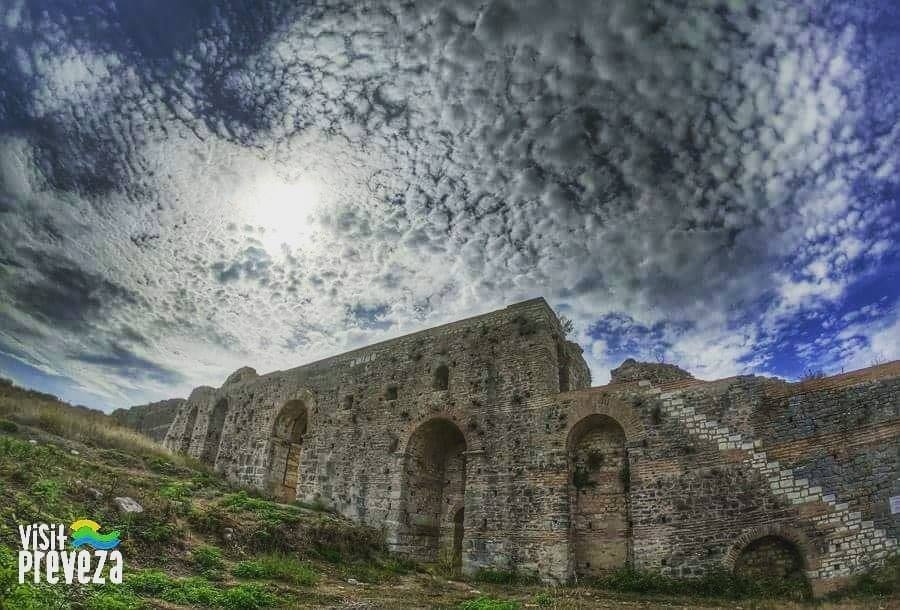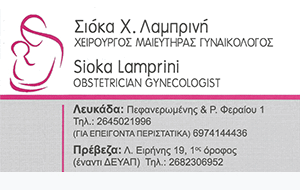Θυμίζουμε πως την Τρίτη 26 Φεβρουαρίου 2019, μέλη του Διοικητικού συμβουλίου του Ομίλου για την Unesco Ν. Πρέβεζας, έγιναν δεκτά σε ακρόαση από τον Εξοχότατο Πρόεδρο της Ελληνικής Δημοκρατίας κ. Προκόπη Παυλόπουλο, προκειμένου να τον ενημερώσουν για την πορεία των ενεργειών σύνταξης του φακέλου υποψηφιότητας.
Σύμφωνα με το ρεπορτάζ του atpreveza.gr, δύο μεγάλα “αγκάθια” για τη συνολική προσπάθεια φέρονται να ξεπερνιούνται σιγά-σιγά. Το ένα είχε να κάνει με τη συγκρότηση ομάδας εργασίας στο Υπουργείο Πολιτισμού και Αθλητισμού, που θα ασχοληθεί με το φάκελο υποψηφιότητας. Λόγω συνταξιοδότησης των παλαιών μελών, η Επιτροπή-Ομάδα εργασίας, δεν μπορούσε να συνεδριάσει. Οι πληροφορίες αναφέρουν ότι τελικώς εδώ και κάποιους μήνες έχει συγκροτηθεί εκ νέου στελεχωμένη επιτροπή, παρ' όλα αυτά δεν έχει συνεδριάσει ούτε μία φορά.
Ακόμη ένα προαπαιτούμενο είναι η οδική παράκαμψη της Αρχαίας Νικόπολης. Και σε αυτό το “μέτωπο” υπάρχουν ευχάριστα νέα και θετικές εξελίξεις.
Όσον αφορά τους δύο αυτοδιοικητικούς πόλους του Νομού Πρέβεζας.
Ο μεν Αντιπεριφερειάρχης Στράτος Ιωάννου, ήταν εκείνος που ασχολήθηκε αρκετά σοβαρά με αυτή την προσπάθεια. Παρ' όλα αυτά στην επικοινωνιακή του στρατηγική τα τελευταία χρόνια έχει προτάξει το εγχείρημα των Πολιτιστικών Διαδρομών των Αρχαίων Θεάτρων της Ηπείρου, αφήνοντας σε “δεύτερη κατάσταση” το εγχείρημα UNESCO. Έπαιξε βέβαια ρόλο και η συνολική προσπάθεια για την παράκαμψη της Αρχαίας Νικόπολης, που ήταν προαπαιτούμενο.
Ο ίδιος διατηρεί επαφές με τα μέλη του Διοικητικού συμβουλίου του Ομίλου για την Unesco Ν. Πρέβεζας.
Ο δε Δήμαρχος Πρέβεζας Χρήστος Μπαϊλης, ουδέποτε προέταξε κάποια προσπάθεια να δει με συλλογικό τρόπο την προώθηση του φακέλου υποψηφιότητας το ιστορικού αυτού Μνημείου.
Παρά τη γενικότερη “παγωμάρα” ενεργειών για το συγκεκριμένο εγχείρημα, η UNESCO διατηρεί στη λεγόμενη tentative list (λίστα αναμονής, δοκιμαστική λίστα), το φάκελο υποψηφιότητας της Αρχαίας Νικόπολης, τον οποίο και παραθέτουμε παρακάτω αυτούσιο στην αγγλική γλώσσα.
Η υποψηφιότητα της Νικόπολης παρέμεινε εν ισχύ μέχρι και τις 15-25 Ιουνίου 2014 στο συνέδριο της UNESCO για την Παγκόσμια Πολιτιστική Κληρονομιά στην Ντόχα του Κατάρ.
Ο φάκελος υποψηφιότητας της Αρχαίας Νικόπολης με κωδικό αναφοράς 5861 βασίζεται σε τρία κριτήρια:
-
Μία από τις καλύτερα δομημένες αρχιτεκτονικά πόλεις των Ρωμαίων στο Μεσογειακό Κόσμο και ένα χαρακτηριστικό παράδειγμα δημιουργίας, εξέλιξης και μετεξέλιξης μίας ρωμαϊκής πόλης σε μία βυζαντινή, πρώιμη χριστιανική πόλη, με μνημεία για κάθε ιστορική περίοδο της ''ζωής'' της.
-
Η μοναδικότητα μίας ρωμαϊκής αποικίας στον ελληνικό κόσμο και το Μνημείο του Αυγούστου.
-
Συνδέεται με ένα κορυφαίο ιστορικό γεγονός. Τη Ναυμαχία του Ακτίου το 31π.Χ.
Αναλυτικά το περιεχόμενο του φακέλου:
Date of Submission: 16/01/2014
Criteria:(ii)(iv)(vi)
Category: Cultural
Submitted by:
Permanent Delegation of Greece to UNESCO
State, Province or Region:
Region of Epirus, Regional Unit of Preveza
Ref.: 5861
Description
A. History: The city of Nikopolis was founded following the victory of Gaius Julius Caesar Octavianus (Augustus) in the naval battle of Actium in 31 BC. The city is associated with the effort to establish Roman dominion and the whole process of “Romanizing” Greece. The province of Nikopolis extended southwards from the mountains of Cassopeia to the province of Roman Patras, and northwards from the river Acheloos to Leucas (present-day Lefkada). Augustus Caesar granted the city substantial political and economic privileges and adorned it with magnificent monuments, while also reviving the Actium Games. The name of King Herod I of Judea and those of many Roman officials such as Germanicus, Nero and Hadrian are associated with donations to Nikopolis. Nikopolis was the capital of Epirus and Acarnania during the first three centuries of the Roman Empire. Built at the crossroads of commercial land and sea routes, it was the centre of Greek culture and a meeting point between the eastern and western worlds. It was the seat of Epictetus’ school of philosophy, while a Jewish community lived within the city. Between the 3rd and 5thcentury AD the city underwent a period of relative decline and stagnation, while from the mid-5thcentury AD Nikopolis became the administrative, artistic, spiritual and religious centre of the area with a Christian character. According to tradition, the Church of Nikopolis was founded by Paul the Apostle. During the early Christian period the city experienced a major economic and spiritual boom, a fact demonstrated by the fortification programme instigated by Justinian and the plethora of monuments which adorned the city. The administrative reorganization of the Byzantine Empire in the 9th century and the transfer of the capital of the Theme of Nikopolis from Nikopolis to Nafpaktos led to the city’s decline and abandonment, which was completed during the 13th century.
B. Monuments: The city, with the fortification walls and the cemeteries, occupies a fertile strip of land between the Ionian Sea to the west and the Ambracian Gulf to the east, where two of the three city harbours were located. The third harbour ran along both sides of the inlet known as Ormos Vathy at the north edge of the modern city of Preveza. The city occupies an area of approximately 375 acres. The plan of the city was the rectangular grid with theDecumanus (the main east-west street) and the Cardo (main north-south street) intersecting at its centre. Nikopolis was planned within walls with four main gates at the compass points. The southern quarters of the city were mainly composed of residential houses but also included the Odeion, while the northern section saw the construction of the Monument of Augustus, the Theatre, the Gymnasium and the Stadium. This area, known to ancient writers as the “Suburb”, is located outside the Roman fortification walls, on the hills, with a magnificent view of the Ionian sea and the Preveza peninsula. The city had a very effective water-supply system. An impressive 50-km-long aqueduct, consisting of a series of arches (arcade) and tunnels, carried water from the Louros springs to the Nymphaeum, from where it was distributed within the city. In Early Christian times the city was reduced to almost a sixth of its previous size, and strong fortification walls, known as the Christian (Byzantine) Walls, were built. Two great basilicas and a Bishop’s Palace built around this time reveal that the city flourished during this period. The most important public buildings are the following: -The Monument of Augustus: Founded by Octavian to commemorate the battle at Actium. -The Theatre: The stage building is tall, probably two stories high, with three arched doorways. The performances took place on a stage platform between the stage building and the orchestra. Three corridors allowed the spectators access to the auditorium, which was supported by three semicircular porticos. -The Odeion: It consists of the auditorium, the orchestra and the stage building. Three semicircular porticos achieve the inclination of the auditorium. It was built in the 1st c. AD and remained in use until the second half of the 3rd c. AD -The Nymphaeum: It lies on the west side of the Roman fortification walls and consists of two U-shaped brick structures with plain external façades and internal niches. These cisterns stood at the terminus of the aqueduct which brought water to the city from the Louros springs, 50 km away; possibly built at the time of Hadrian. -The North Thermae:Roman public building, situated on the west side of the Roman fortification walls. It consists of circular and square rooms, decorated with niches and arches. -The Basilicas: There are seven notable Christian basilicas. Four lie within the perimeter of the Byzantine Walls. Basilica A was founded by Bishop Doumetios (525-575 AD) and is decorated with elaborate mosaics, combining floral and pictorial motifs. Mosaics are also found in Basilica B, built at the time of Bishop Alkison, who was active during the reign of Emperor Anastasios (491-518 AD). A century later (575-600 AD), another basilica, Basilica C, was built in the northern part of the Byzantine fortification, while in the south a fourth Basilica, Basilica ST (F), was discovered in 1981. Two other basilicas - the Asyrmatos Basilica and the Basilica of the Holy Apostles - are situated outside the perimeter of the Byzantine walls.
Justification of Outstanding Universal Value
The foundation of Nikopolis is directly associated with a major historical event, Octavian’s victory in the naval battle of Actium against the combined forces of Mark Antony and Cleopatra. It is an event of tremendous historic significance, altering the whole political and cultural context of the time, since it was the last of the civil wars of the Roman Republic, signaling the end of the Roman Republic and the beginning of the Roman Empire. Octavian’s dominance brought peace to the Roman state after numerous civil wars. The most powerful man in the Roman world and named Augustus by the Senate, Octavian became the first Roman Emperor, who transformed the oligarchic/democratic Republic into the autocratic Roman Empire. The establishment of the city of Nikopolis took place during a period that marks the beginning of the Pax Romana. Situated on one of the most important routes connecting the western world with the Greek province, Nikopolis proved to be a city of great military and political importance, ensuring Roman control of the East Mediterranean. After Octavian’s victory at Actium, people from the adjacent cities of Epirus, Leucas and Acarnania were forced to live in the Nikopolis area along with Roman settlers. Nikopolis therefore provides an intensive model for studying the development of the Roman residential concept. Nikopolis preserves its unique character, while a large number of buildings of monumental importance allow us to visualize key aspects of a city of Late Antiquity.
Criterion (ii): Nikopolis is a typical example of a city organised along the lines of a typical Roman colony in Greek territory, dated to the early years of the Roman Empire and forming one of the best-planned Roman cities to be found throughout the Mediterranean world. Structures built during the “saeculum augustum” (the Augustan era) established and shaped the character of Roman cities well into Late Antiquity. Evidence of this process is also witnessed in Nikopolis. Nikopolis, being a city that was inhabited continuously from Roman (1st c. BC) to Middle Byzantine times (9th c. AD), boasts material remains from all these periods. It also forms a characteristic example of the creation, evolution and transformation of a Roman city into an Early Christian/Early Byzantine city, with a set of monuments for every historical period of its life.
Criterion (iv): The “saeculum augustum”created a culture remarkable for its creativity, which is represented in the monumental structures and buildings (Monument of Augustus, Odeion, Theatre, Nymphaeum, Mausoleums), in the town planning and in the advanced engineering and construction techniques. Nikopolis is an exemplary testimony of a full-fledged Roman colony in the Greek province.
Criterion (vi): The foundation of Nikopolis is connected with a major historic event. Octavian’s crushing naval victory at Actium in 31 BC, planned and won for him by his admiral Agrippa, put an end not only to Mark Antony’s ambitions but to the whole Hellenistic era of the Successors of Alexander. Less than a year later, on 29 August, 30 BC, Octavian officially declared the end of the Ptolemaic dynasty, thus putting an end to the whole Hellenistic period. The Successors’ kingdoms were gradually absorbed into the administrative efficiency of the Roman Empire and a new era began. Furthermore, in the winter of 63 AD, Saint Paul, according to written sources, stayed at Nikopolis, founding its Church; a few years later, in 89 AD, Epictetus, the great Stoic philosopher from Hierapolis in Phrygia, left Rome for Nikopolis in order to avoid the Emperor Domitian’s persecution, and founded a philosophical school there.
Statements of authenticity and/or integrity
The archaeological site of Nikopolis, covering an area of 900 hectares (approximately 14,000 acres), contains within its boundaries all the key attributes that convey its Outstanding Universal Value, testifying to the urban character of the site and its great importance as a civitas libera, which enjoyed special political and financial privileges and became a major cultural and political centre. Nikopolis still preserves all the necessary elements to demonstrate the key aspects of a city of Late Antiquity, providing unaltered archaeological evidence from antiquity to the present day, since it was not inhabited during modern times. The protection of the monuments and their natural environment as a unit ensures the authentic context of the city, its walls, cemeteries and harbours.
The integrity of Nikopolis is ensured primarily by the strict legal framework, which prohibits any construction within the boundaries of the site and provides for the maintenance of the agricultural character of the area. This protective legislation aims to restrict land use and control human activity in the area. The interventions to the monuments of Nikopolis are compatible with the original building system; they are based on the original construction methods, using traditional methods and materials.
The archaeological site of Nikopolis is under the constant surveillance and monitoring of the Hellenic Ministry of Education, Religious Affairs, Culture and Sports, General Secretariat of Culture, through its competent Ephorates of Antiquities. The archaeological excavations of Nikopolis began as early as the 1910s and have continued ever since. Furthermore, a Scientific Committee for the archaeological site of Nikopolis has been established, carrying out several stabilization, conservation and enhancement projects on the site. In 2009 the archaeological site of Nikopolis won a Europa Nostra award in the category of conservation.
Comparison with other similar properties
Nikopolis is a Roman city that can be compared with other Roman colonies/cities such as Timgad and Djemila (Algeria), Aquileia (Italy) and Leptis Magna (Libya), but there are some substantial differences: the foundation of Nikopolis was directly associated with a major historical event, the victory (nike in Greek) of Gaius Julius Caesar Octavianus (Augustus) in the naval battle of Actium in 31 BC and consequently the establishment of the Roman Empire itself. Therefore, Nikopolis (Nike-polis, “city of victory”) was created ex nihilo, by the first Roman Emperor Augustus, in order to celebrate his victory and symbolize his autocracy. As the first city of this new era, sealing the establishment of the Empire under Augustus’ reign, it was remarkable in scale and included a series of monuments created to glorify the Emperor.





















































